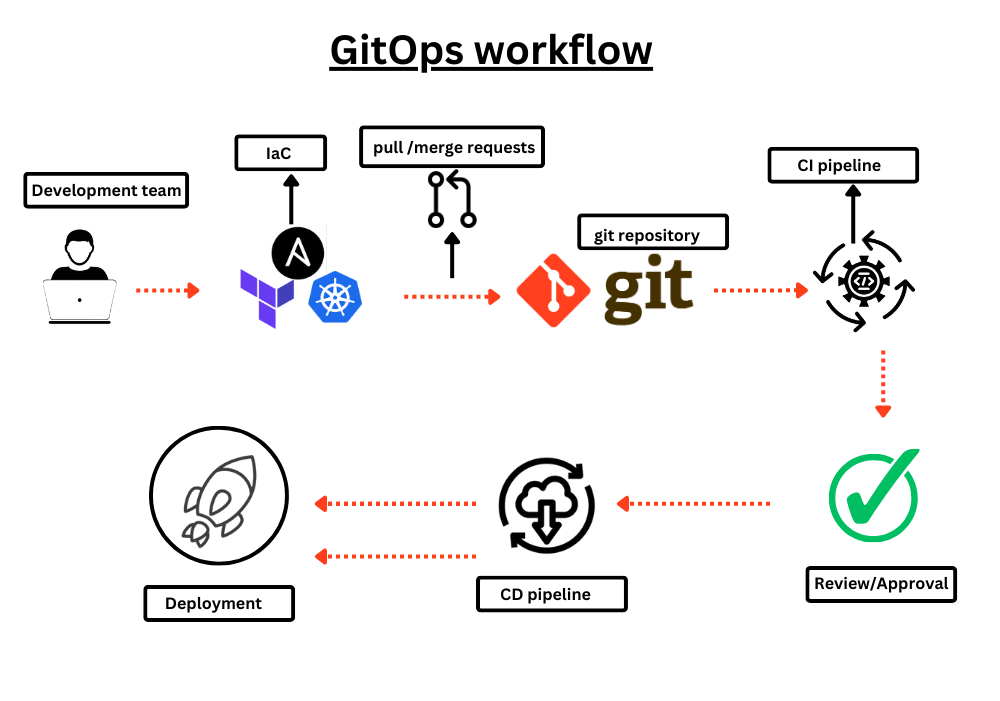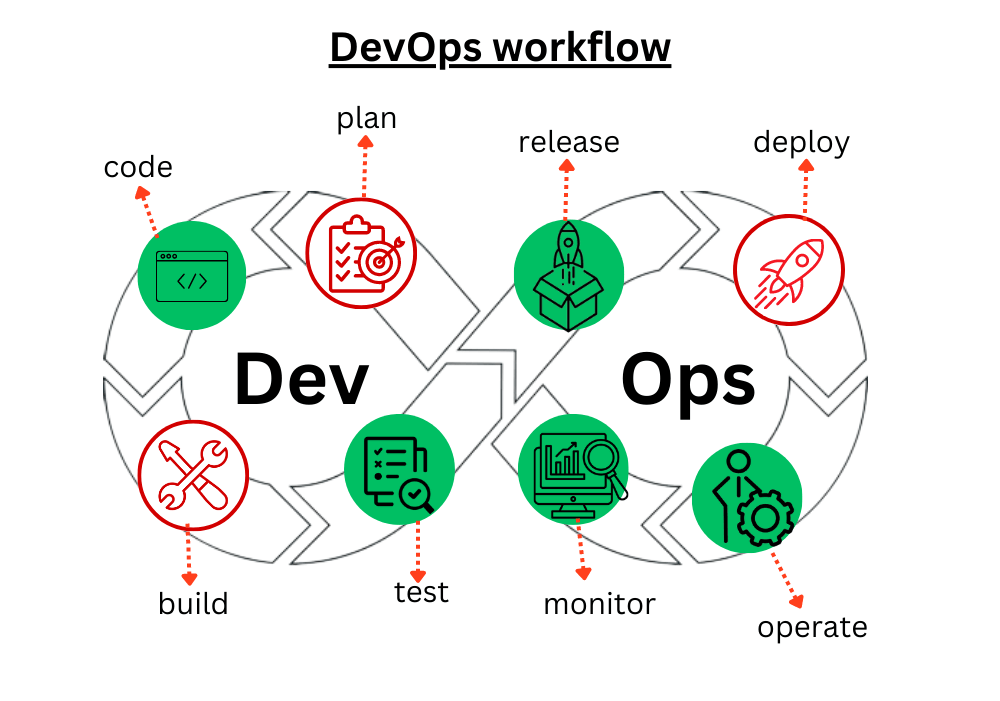GitOps vs. DevOps: What's the Difference?
By
Community
Use Cases
Jul 21, 2023
Navigate to:
This post was written by Damilola Ezekiel, a Software Engineer and a Technical Writer who enjoys learning and sharing new things through writing. She is also an avid open source contributor.
In software development, GitOps and DevOps are prominent techniques for enhancing collaboration and automating software delivery processes. While these two models aim to improve the efficiency of the software development life cycle, they differ in their core principles and implementation.
This post will help you understand the differences between GitOps and DevOps, their workflow, knowing which approach is better for your organization, and the factors to consider when deciding on which approach to adopt. By the end of this post, you’ll have a clear understanding of the different aspects of GitOps and DevOps, enabling you to make the right decisions regarding their adoption.
What is GitOps?
GitOps is an approach to continuous delivery where you use a Git repository as a single source of truth (SSOT) for both application code and infrastructure as code (IaC). It focuses on deploying IaC and applying DevOps practices such as pull requests, branching, merging, code reviews, and testing to infrastructure automation.
The goal of GitOps is to automate the deployment of applications and infrastructure changes by using Git as the primary tool for managing all deployment-related artifacts.
How does GitOps work?
GitOps aims to treat IaC the same way as application code. This means you store infrastructure configurations in Git repositories and version and manage configurations using the same tools and processes as application code. This ensures you can properly test and review changes made before deployment.
In a GitOps workflow, there’s a Git repository for the IaC project and a DevOps pipeline for it. Here’s what a basic GitOps workflow looks like:
-
Create a Git repository to serve as an SSOT and to hold both the IaC and application code.
-
Create pull/merge requests to make changes and collaborate before pushing back to the main branch of the repository.
-
Run a CI pipeline to integrate changes, validate configuration files, and perform automated tests.
-
Review and approve the changes to ensure that the changes are well tested before being applied in an environment.
-
Run a CD pipeline for the continuous deployment of the infrastructure.

What is DevOps?
DevOps is a software development and delivery process that emphasizes collaboration between development (dev) and operations (ops) teams. It’s the combination of practices, methodologies, and tools designed to increase the speed and quality of software development while ensuring reliable and repeatable deployment of software. This practice can help automate many of the tasks associated with software development and deployment and facilitate team collaboration and rapid and reliable software release.
How does DevOps work?
DevOps integrates the development, testing, and deployment phases of the software development life cycle (SDLC) into a seamless, continuous process. To achieve this, automate as much of the process as possible using tools such as version control systems, automated testing frameworks, and CI/CD pipelines.
The DevOps life cycle involves the following phases:
-
Plan: This is the first stage in the DevOps practice. Here, the development team comes up with the project requirements and objectives and makes a plan for execution.
-
Code: The development team works on the code using version control tools such as Git, Mercurial, and Subversion for collaboration.
-
Build: The written code is compiled and made executable for deployment.
-
Test: Automated tests are carried out on the code to check for bugs and errors and also to see if the code works as intended.
-
Deploy: The software is deployed using the CD pipeline to allow the release of features frequently into production.
-
Operate: In this phase, the operations team tests the software in a production environment to validate that it’s suitable for end users.
-
Observe and monitor: Developers and operations teams receive continuous monitoring and feedback, allowing them to identify and address issues quickly.

What is the difference between GitOps and DevOps?
GitOps and DevOps are two very similar software development approaches with key differences. Understanding their differences is important in knowing which of the approaches to adopt.
-
DevOps is an approach to bringing development and operation teams together to work efficiently as a team in order to enhance collaboration and communication. This helps to shorten the feedback time between the two teams and speeds up development. GitOps is the implementation of DevOps best practices that emphasizes using Git to manage infrastructure and application deployment.
-
GitOps uses Git as the SSOT for managing infrastructure and application deployment and other related tools such as Kubernetes, IaC, and various CI/CD pipelines. DevOps, on the other hand, uses a wider variety of tools to automate the entire SDLC. These tools include version control tools like Git, CI/CD tools such as Jenkins and Ansible, containerization tools like Docker and Kubernetes, and Iac tools such as Terraform.
-
GitOps focuses on managing IaC properly using best DevOps practices. DevOps focuses on automating the software development process from start to finish. This includes processes such as testing, continuous deployment, observation, and monitoring.
-
The main goal of GitOps is correctness by ensuring that all changes in infrastructure and application code are made through pull requests that are reviewed and tested before being deployed. This helps to prevent errors and inconsistencies from being introduced into the production environment. The main goal of DevOps is to improve the speed, efficiency, and quality of software development and delivery by breaking down traditional silos between development, operations, and other teams involved in the software development life cycle.
Is GitOps replacing DevOps?
GitOps is not necessarily replacing or ever going to replace DevOps. It’s an approach to implementing DevOps using best practices. It allows the development team to use Git as an SSOT for IaC and application deployment. While GitOps is gaining popularity in providing better collaboration, security, accuracy, and other benefits, it cannot entirely replace DevOps. DevOps is a deep-rooted approach that’s been adopted by many organizations. Additionally, DevOps allows a wide range of tools and technologies to serve each organization’s needs, while GitOps is a relatively new approach that’s still evolving.
GitOps still leverages DevOps philosophy and practice to make work easy and faster for the DevOps team.
GitOps vs. DevOps: Which is better for adoption?
The choice between the DevOps and GitOps approach largely depends on the needs and goals of an organization. Both methods have their benefits and disadvantages, and knowing when to adopt one over the other will determine the efficiency of the development processes of an organization. While DevOps focuses on automation, collaboration, and integrating seamless communication between the development and operations teams, GitOps uses Git pull requests to manage and deploy infrastructure.
Instances where an organization might decide to adopt the GitOps approach are when there’s a need for faster and more reliable deployment. Also, organizations that prioritize security and disaster recovery capabilities can use GitOps, as this approach allows access control to only a specific group of people who review and approve changes before deployment. There’s also a record of every change made to productions, and it allows you to easily roll back to any previous state of your application.
The DevOps approach is more suitable for large organizations with multiple teams, as it emphasizes collaboration among development and operations teams and improves communication. DevOps allows the organization to customize its deployment process using various tools. DevOps has also been in use for a longer period of time, which means better support and resources.
It’s also possible to use both approaches together. By integrating GitOps with DevOps, organizations can leverage the benefits and advantages of both methods.
Closing thoughts
This post has outlined the relationship between DevOps and GitOps, which approach is better for adoption, their differences, and use cases.
DevOps is a culture that seeks to improve collaboration between the development team and operations team while using automation tools to result in faster development. GitOps uses Git to track changes and treat IaC as application code while making use of DevOps best practices.
